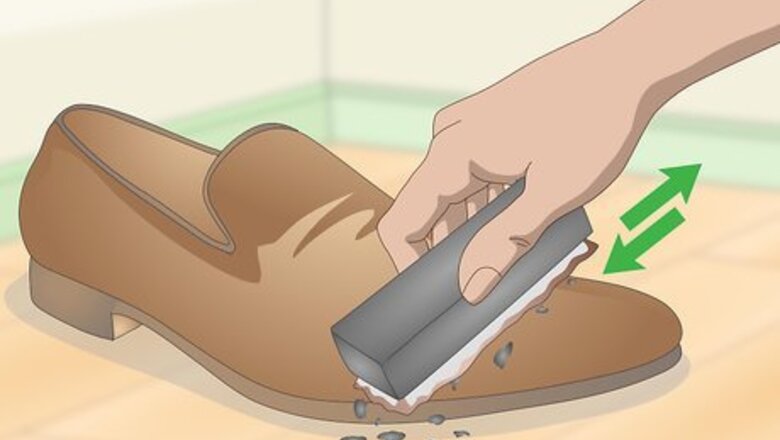
views
X
Research source
If you have a pair of faux suede shoes that you absolutely love and want protect, you’ll need to clean the shoes thoroughly to remove any dirt, then spray them with a synthetic waterproofing chemical. If you follow the steps properly, your shoes can be water and stain repellent!
Cleaning Faux Suede Shoes
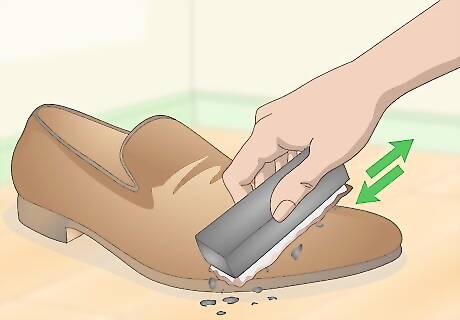
Brush the shoe with a suede brush to remove dirt. Put your hand inside the hole in the top of the shoe so that you can easily hold it while you brush it. Brush the sides of the shoe, in the direction of the nap. Then, take the suede brush and brush the front, back, and tongue of the shoe. Repeat the process on the other shoe. You can purchase a suede brush from most shoe stores or online. If you don't have a suede brush you can use a clean, hard-bristled toothbrush as an alternative. If you wear faux suede shoes on a daily basis, brushing them once a week will help keep them clean.
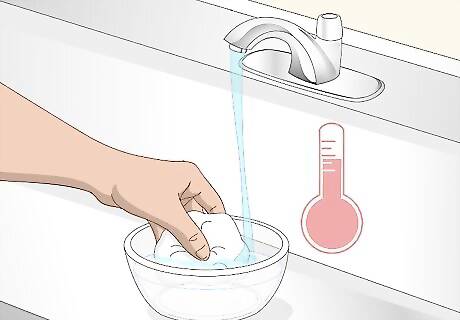
Moisten a washcloth with warm water. Soak a washcloth with hot water and wring it out thoroughly. Brush a small area of the shoe with the damp cloth to make sure that the color doesn't change or bleed when it makes contact with water. Don't saturate the cloth too much or you will soak your shoes. A lint-free or microfiber cloth will prevent transferring lint to the shoe. Unlike real suede, faux suede typically reacts well to water.

Squeeze a drop of mild dish soap into the cloth. Purchase a traditional dish soap at a grocery store and squeeze a pea-sized drop in your washcloth. Rub the cloth together to create suds with the dishsoap.

Wipe down the shoe with the rag. Make little circles as you wipe down the sides of the shoe. Concentrate on any visible stains that you see and continue working in a circular motion to remove stains. Work your way over the front and back of the shoe. It’s best to clean stains as soon as they happen so that the stain doesn't have time to set.
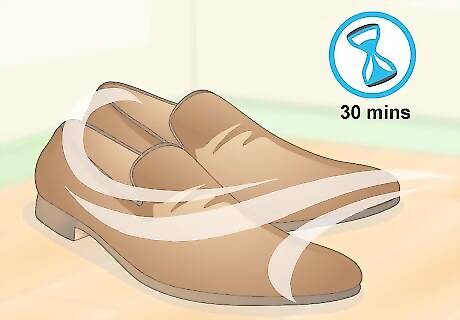
Let the shoes dry for 30 minutes. Leave the shoes in a well-ventilated area to dry before you wear them again. If you want to dry the shoes faster, you can position them in front of a fan. If you plan on waterproofing your shoes, you should do so immediately after you clean them.
Waterproofing Faux Suede Footwear
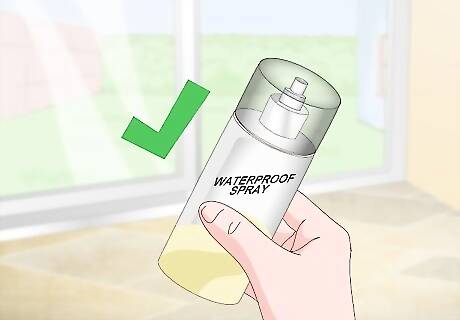
Purchase a silicone-based waterproof spray made for shoes. Always clean your shoes before you apply waterproofing chemical. Most silicone-based sprays will bind with the faux suede material. The waterproofing spray is more effective for faux suede than waterproofing waxes. Read the label or product description to see what fabrics and materials the waterproofing spray was designed for.

Test the waterproofing agent first. Spray some of the waterproofing spray into a rag and wipe the solution in a tiny corner near the back of the shoe. The color on your shoes may interact with the chemicals in the waterproofing agent and could alter or fade the color of your shoes. Wait for 10 minutes and take notice of whether the agent reacts strangely with the shoe’s material or changes the shoe’s color. If the spray that you purchased reacts poorly with the shoe, you’ll need to purchase a different brand of waterproof spray.
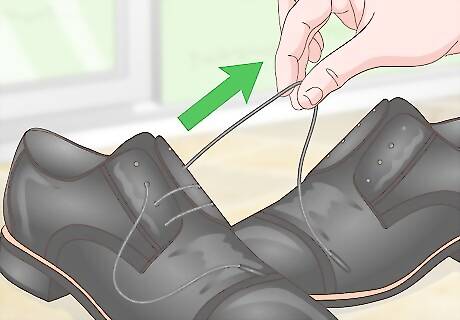
Remove the laces and cover any embellishments. Remove any shoelaces so that they don’t get covered by the waterproofing spray. If there are embellishments like buckles or jewels, cover them with painters tape to avoid spraying them with the waterproofing chemical as well. The spray could react poorly with certain materials and change their color.
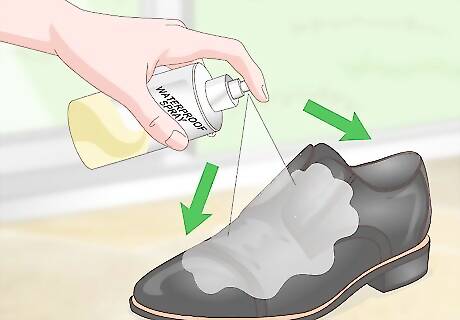
Spray the top, front, and back of the shoes. Work in a well-ventilated area and wear a facemask when using the spray. Hold the waterproof spray 6–8 inches (15–20 cm) away from the shoes and press the button on the top of the canister. Spray the sides of the shoe first, then the front and back of the shoes. Spray in the direction of the nap to get full coverage on the fibers of the faux suede. Wear gloves and a facemask when waterproofing the shoes so that you don't inhale the chemicals.
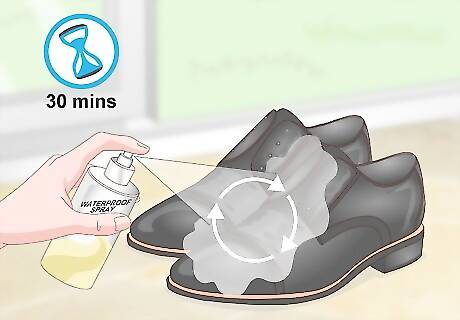
Let the shoes dry for 30 minutes then spray a second coat. Leave the shoes in a well-ventilated area or in front of a fan so that they dry faster. Then, repeat the process again and apply a second coat. The second coat of water repellent will ensure that you've covered the entire surface of the shoe with the chemical. Examine your shoes after they dry and make sure that the spray didn’t change the color of your shoes. If the chemicals did change the color of your shoes, you may have to redye them.
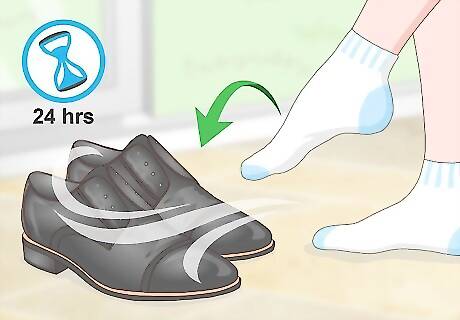
Let the shoes dry for 24 hours before wearing them. Leave the shoes out so that they dry completely. If you followed the steps correctly, they will repel water and will be better protected against stains.




















Comments
0 comment